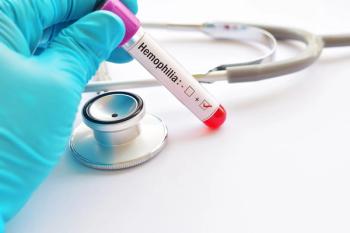
Dealing With Weekend Warriors and Overuse Injuries
Athletes are peculiar patients. Relief from the pain of injury is not their first priority, nor is healing an injury. The number one priority is getting back in the game, back on the bike, back on the road.
Athletes are peculiar patients. Relief from the pain of injury is not their first priority, nor is healing an injury. The number one priority is getting back in the game, back on the bike, back on the road.
"I am a runner and my definition of death is the end of exercise," explained Suraj Achar, MD, assistant clinical professor and education director of the sports medicine fellowship at the University of San Diego School of Medicine. "Injury or no, we have to keep moving. The goal is not to treat pain, but to get people back in action."
Sports injuries are a significant part of most primary care practices, Dr. Achar reminded the American Academy of Family Physicians Scientific Assembly. Between 40% and 70% of runners are injured annually. Fully 20% of runners have to stop running at some every year due to injury. One third of all ER visits are for sports related injuries.
Spectacular crashes in sports such as cycling or skiing can produce severe trauma, but most sports-related injuries are overuse injuries. Because overuse injuries seldom involve surgery, so orthopedic specialists are rarely involved - primary care physicians carry the load.
Most sports injury headlines involve professional athletes, the vast majority of patients are more casual competitors, weekend athletes whose dreams of victory are stronger than their bodies. Again, primary care practitioners carry the caseload.
All overuse injuries share common features, whether its is a tendonopathy or stress fracture from running, tennis elbow, Little league elbow, or any of a dozen typical injuries. Repetitive stress produces microtrauma to a musculoskeletal structure that results in overload and breakdown. Overuse injuries can affect bone, cartilage, ligaments, muscle, tendons, nerves, or bursae.
Treating an overuse injury is a two-step process, Dr. Achar said. The initial step is to recover the full range of motion lost to the injury. The second step is to recover full strength.
Sports injuries are traditionally treated with rest and ice, he continued. A more effective practice is to begin with ice to reduce inflammation and pain, then add what he calls relative rest, cutting back on the activity that caused the injury to a comfortable level or cross training to maintain overall conditioning. As range of motion and strength return, the training level can be increased.
"Pain is a good guide," Dr. Achar said. "If an activity doesn't hurt following an overuse injury, it is probably good for the patient."
Ice is the best intervention during the acute phase of overuse injury, Dr. Achar said. Apply it immediately after injury and keep it in place as long as possible. Nonsteroidal antiinflammatory agents may help reduce pain in the first few hours, but they have little to no effect on inflammation because tendon, ligaments, and most other structures damaged by overuse have no circulating white cells. Ice reduces inflammation directly and immediately - regardless of tissue type.
"The faster you use ice, the faster you get back on the field," Dr. Achar said. "Professional athletes know this. That's why every team in every sport keeps massive quantities of ice and ice packs on hand. Nonprofessionals can use the same management strategy just as successfully. Ice is the single most useful treatment modality we have for overuse injuries."
Newsletter
Access practical, evidence-based guidance to support better care for our youngest patients. Join our email list for the latest clinical updates.











